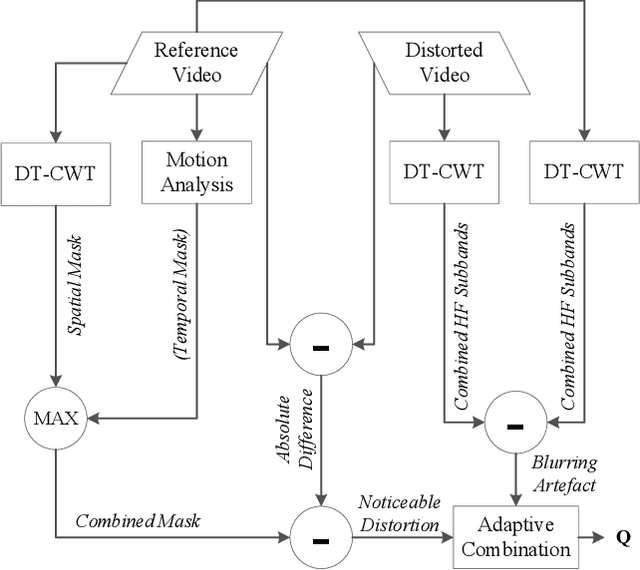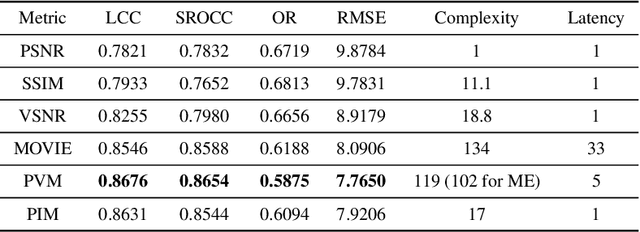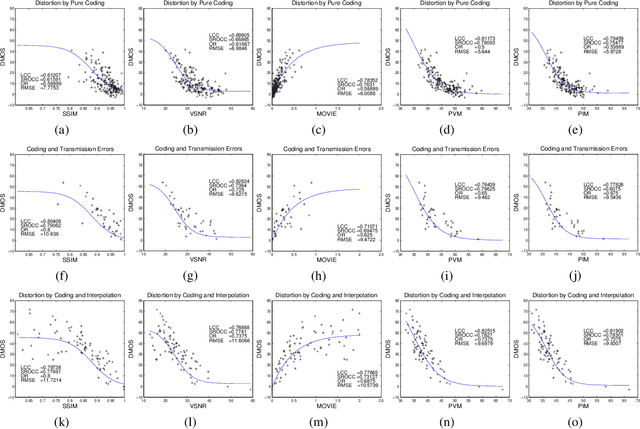Quality assessment methods for perceptual video compression
Paper and Code
Jun 15, 2021



This paper describes a quality assessment model for perceptual video compression applications (PVM), which stimulates visual masking and distortion-artefact perception using an adaptive combination of noticeable distortions and blurring artefacts. The method shows significant improvement over existing quality metrics based on the VQEG database, and provides compatibility with in-loop rate-quality optimisation for next generation video codecs due to its latency and complexity attributes. Performance comparison are validated against a range of different distortion types.
 Add to Chrome
Add to Chrome Add to Firefox
Add to Firefox Add to Edge
Add to Edge